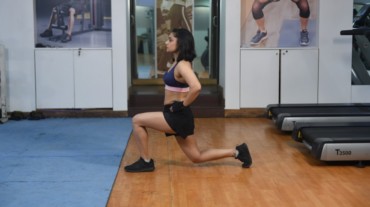
If you are looking to muscle up your lower body then you just can’t ignore lunges exercise. A fabulous and easy exercise, each lunge comes with the promise to sculpt your legs. But here’s the thing: there are many types of lunges out there, all of which have their own benefits. And today, we’re pitting two of them—static lunges and walking lunges—against each other.
Both of them have their pros and cons and today we will help you figure out which one will suit you the best.
But first: here are the muscles a lunge focuses on
Whether you do a static lunge or a walking one, these are the most prominent muscles they target:
Please note: If you opt for a walking lunge, then one more muscle will be added to this tally—i.e. your core.
Static lunges are for the beginners
As the name suggests this is one of the most basic lunges that you can try on leg day. It will not just tone up your leg muscles, but will also work on that cellulite that’s making your legs look wiggly.
If you are a beginner then jumping straight to a walking lunge is not a great idea because your muscles won’t be able to take all that load. Therefore you need to warm your muscles up with a static lunge for at least a month before trying the advanced one.
Doing 20 lunges with each leg and 4 such sets is good for beginners. As you progress, you can keep on adding five more reps to each set.
Walking lunges is what you’re looking for if you want to sculpt your legs to the T
A walking lunge requires a lot of balancing, as you have to maintain your posture. An extension of basic or static lunge, you need to step forward and then get down with a lunge, repeating the motion so as to “walk ahead”.
It’s the walking which adds value to this move because when you walk forward, you’re extending your leg muscles, thus bringing in more contraction. Here the entire focus will shift on the frontal leg. And as both your legs move alternatively (unlike in a static lunge) you feel more pressure on the targeted muscles. As a result, you’ll end up burning more fat and get tighter muscles.
In fact, here are some benefits of doing a walking lunger:
So, do we really have to spell it out for you? Because clearly the winner here is walking lunges! So ahead and try it out.